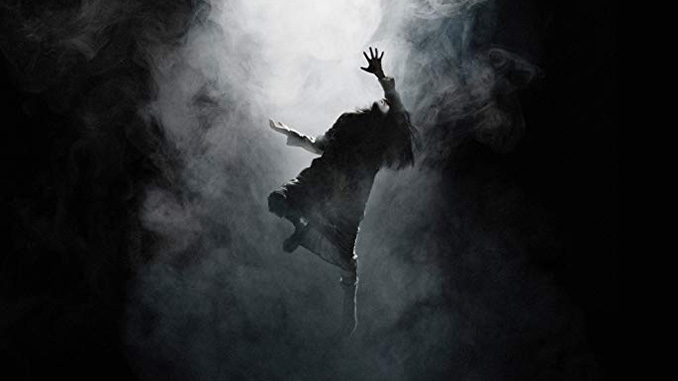
Welcome to Mercy is a brand-new horror/thriller film that’s available today from the folks over at IFC Midnight. The script was penned by Kristen Ruhlin (who also stars in the lead role of Madeline) and it was directed by Tommy Bertelsen. I’m admittedly unfamiliar with Bertelsen’s other directorial work, but I did read on his IMDb page that he appeared in 1994’s Ed Wood (which is a very good movie) as the character “Tough Boy,” and I’d hazard a guess that he probably has yet to get his due for that so I thought I’d mention it here.
Welcome to Mercy, on the other hand, is nothing like Ed Wood, which was a biographical comedy-drama that was shot in black in white and has no relevance whatsoever to this review. Welcome to Mercy was shot in color—even though the fittingly bleak Latvian backdrop probably could have fooled you into misremembering—and it’s a little bit about demons and a little bit about exorcisms and a little bit about estranged families and a lot a bit about things that I never quite figured out. Lots of drama to be sure, but decidedly no comedy.
The story opens with Madeline and her daughter, Willow (Sophia Massa), arriving at Madeline’s estranged parents’ house in Latvia on a cold, dark night. Her mother, the frigid Yelena (Svetlana Ivannikova), opens the door, and Madeline explains that they’ve come at the urging of her diseased and bedridden father, Frank (Andrey Yahimovich), who apparently reached out by snail mail. Perhaps most unbelievable of all is that this alone prompted Madeline to board a plane or some sort of hydro-train for Latvia with her six-year-old (probably, I don’t know) daughter in tow without following that letter up with even a single phone call, here in the 21st century, but it simply wasn’t up to me.
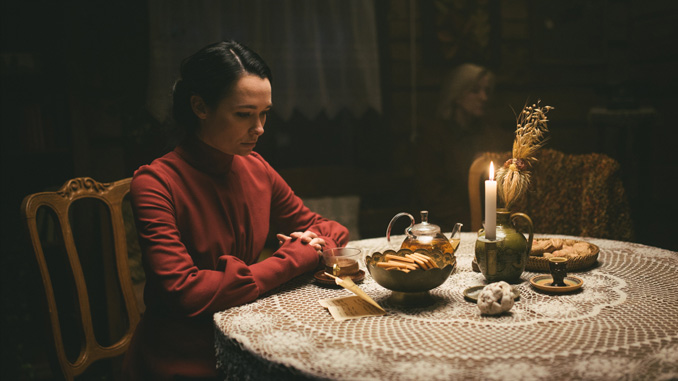
Like me, Yelena clearly doesn’t love Madeline’s explanation, nor this unwelcome surprise intrusion, and starts making suggestions to the tune of her single daughter and the grandchild she’s never met wandering off into the dark, Latvian winter to find a hotel. Eventually, that suggestion is put to rest and people start going to sleep. Everyone except Madeline.
The scenes that follow are where the film starts to open up and really explore and build its atmosphere. We get shots of Madeline sneaking around a home that hasn’t been hers since she was her daughter’s age, looking for keys to locked doors and finding random wells in sheds. Some of it is oddly put together, but the effect is good and spooky, and it certainly piqued my interest.
The atmosphere continues to expand and delight, with really interesting set designs and filming locations, set against a few really beautiful shots of a very desolate, remote, and appropriately foggy Latvia. And in addition to the well-built atmosphere, Welcome to Mercy was also filled quality performances. The actors were really very compelling on a whole, but I found that the older characters in particular—Yelena and Father Joseph (Juris Strenga)—did a really stellar job with authenticating the atmosphere, grounding us in this spooky, detached foreign land. They made it feel somehow more real, if that makes sense—more believable.
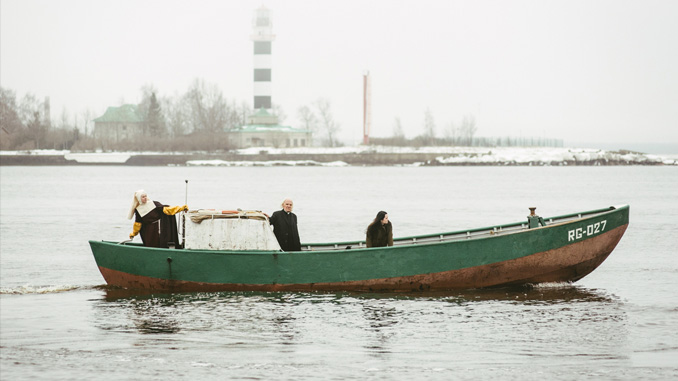
[This may have had something to do with Yelena’s accent—which was genuinely, authentically difficult to understand and also seemed to encourage her to speak very slowly, which is creepy in its own right—and the fact that Juris Strenga as Father Joseph looks exactly like Angus Scrimm from Don Coscarelli’s Phantasm (1979), as my Wolfbane editor, Ric Slager, deftly pointed out. Seriously, you should really Google it. I’ll wait.]
But, I mean, unfortunately… the atmosphere building and the acting really have to be supported by a strong story, or at least a very clear one, and Welcome to Mercy’s was just sort of neither. While the aesthetic-building throughout the beginning and at least a portion of the middle was exciting for a time, it never ended up being adequately explained at any point, which made it increasingly more taxing and less exciting before eventually swelling to entirely inconsequential by the end.
To illustrate, an example: One of the things that drew me to this release was its trailer (which is really something that we need to talk about—trailers are getting seriously good and seriously deceitful these days), which among other things featured a glimpse of Madeline either totally covered in blood or mud or something equally as sinister, writhing on a table and screaming. It’s actually even the thumbnail IFC chose for their YouTube trailer.
While that scene did technically happen in the film, it occupied about as much time—maybe a two seconds total—that it occupied in that trailer and was absolutely never explained further ever again. I’m not even sure if we’re to believe that it happened for real or not, and there was honestly so very little setup or context that I can’t tell you anything more about it or its significance having seen the movie now than I could have when I had only seen the trailer. That’s really unfortunate.
There’s a balance, of course, when it comes to over- and under-explaining very visually driven and intentionally mysterious sequences like this, and you want to make sure you’re giving the sequence room to breathe. But give it too much room, and it’s going to lose its impact altogether. The case here was a severe lack of explanation, not even just within the sequence itself but also in the lack of context built out around what was happening. I would have liked to have seen these scenes explored more deeply and deliberately and just a touch more clearly because in a lot of cases, they were shot really well with very compelling performances but ending up being too confusing and disjointed to leave a mark.
The last thing that I have to mention is the soundtrack, which was absolutely awful. It was probably the worst, most disorienting part of the entire film if I’m being perfectly honest. There was a lot of loud, choral singing over weirdly dated-sounding swelling and crescendoing of big inappropriate instruments, ill-suited for the tone of the scenes they were scoring. There were a few points—toward the end, especially, around the climax—that I was really taken out of because I kept becoming distracted by what I was hearing. I concede that this could be a matter of my own personal taste, but, I mean, I don’t think so. It really just feels like another misstep by a film that never quite nailed down what it was or was trying to do.
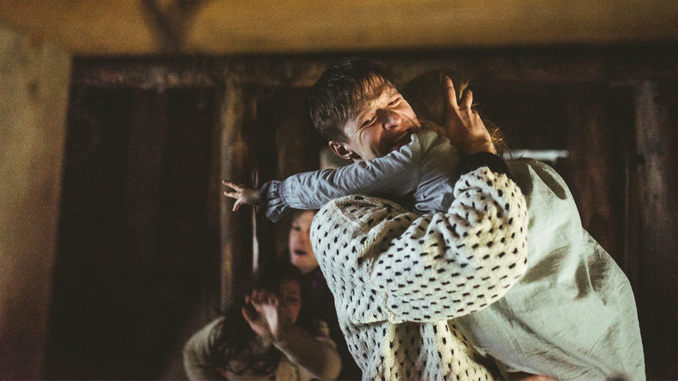
With all of its promise, from the acting to the atmosphere to the story that they didn’t quite write, I’m disappointed that it didn’t live up to what I thought it could, and I’m disappointed that I didn’t get to love it. I really wanted to. A script that had been a little bit clearer, assumed a little less about its audience, and honestly just held our hands a little bit more could have easily earned Welcome to Mercy a place onto my top films of 2018 list. It didn’t quite get there, but it’s still worth checking out for its redemptive qualities… (except for the soundtrack, which is truly awful and there’s nothing redemptive about it, I’m sorry).

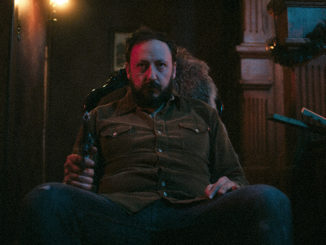
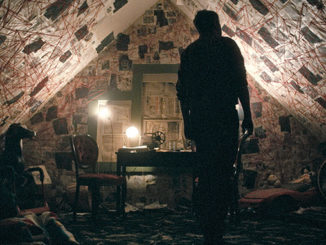
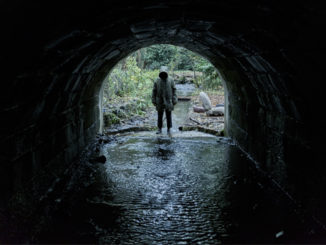
Where can I find the soundtrack